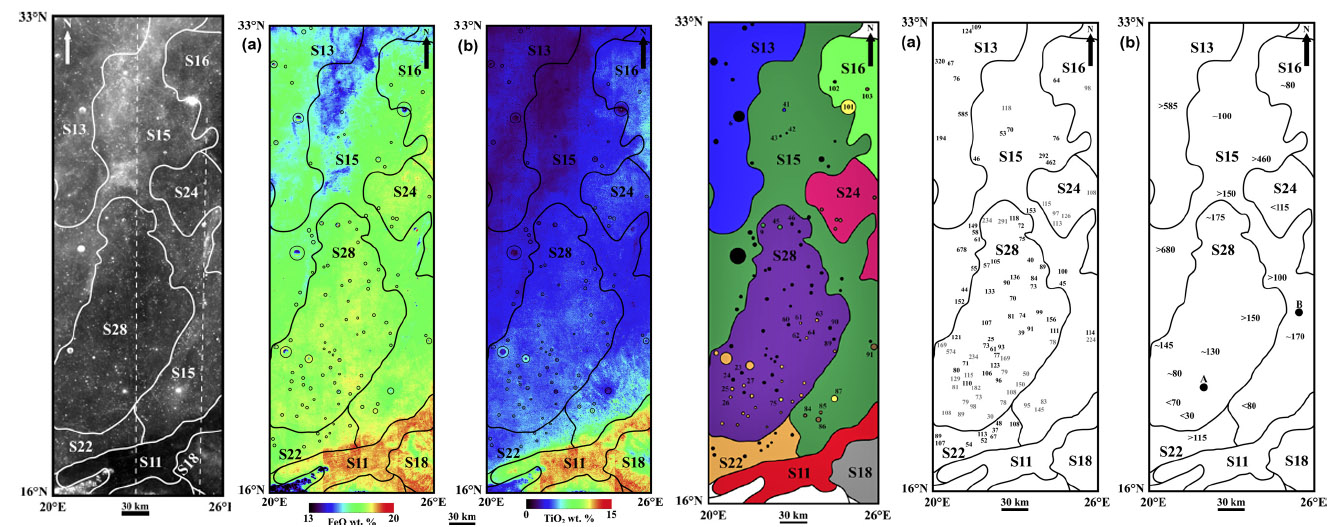Difference between revisions of "February 25, 2020"
(Created page with "__NOTOC__ =Ejecta Mapping > Lava Depths= Originally published September 13, 2010 <!-- Start of content --> <!-- ws:start:WikiTextHeadingRule:1:<h1> --> <!-- ws:s...") |
(No difference)
|
Latest revision as of 01:04, 25 February 2020
Ejecta Mapping > Lava Depths
Originally published September 13, 2010

image from Weider and colleagues; Icarus (2010)
Spectral data can distinguish compositionally different lava flows. In a just published paper, Shoshana Weider, Ian Crawford and Katherine Joy have used
this fact to estimate the thickness of lava flows in Mare Serenitatis. The panels above indicate the steps in their analysis. They start with maps of
compositionally different mare units (left) made by Harry Hiesinger et al. in 2000. The next step was to use existing procedures to convert UV-Vis
Clementine multi-spectral data to estimate FeO (2nd) and TiO2 (3rd image) contents across the area of interest. Weider's team determined the FeO and
TiO2 concentrations immediately around small craters (circles), as samples of the material the crater excavated as continuous ejecta, and they also
determined compositions for each mare unit in the spaces between craters. The 4th panel shows with different colors the separate lava flows, and the
circles representing craters show the color of the lava flows in each craters ejecta. For example, the purple unit (S28) includes two conspicuous craters
that excavated thru the purple lavas and brought up material from the orange unit (S22) which must underly it. Based upon known relationships between
depths and diameters for small craters, the next step was to estimate the likely thickness of each mare unit or lava flow (5th panel). The rightmost panel
shows the averaged estimates of lava flow thicknesses, which are in the range of 80 to 600 m, with the majority in Serenitatis being less than 150 m. The
authors list various uncertainties, but their estimates are consistent with others. They are however, much thicker than individual basaltic lava flows on Earth
and probably represent multiple flows of similar composition that have piled up on each other. This technique can now be done with higher precision using
the newly released Moon Mapper which has much higher spectral resolution than Clementine. This is another project that advanced amateurs can now
accomplish.
Chuck Wood
Technical Details
Related Links
Rükl plate 24
Weider, Crawford and Joy (2010) Individual lava flow thicknesses in Oceanus Procellarum and Mare Serenitatis determined from Clementine multispectral
data. Icarus 209 (2010) 323–336.
Related paper
Yesterday's LPOD: Happy 2500th
Tomorrow's LPOD: Seeing More At Wargentin
COMMENTS?
Register, Log in, and join in the comments.



